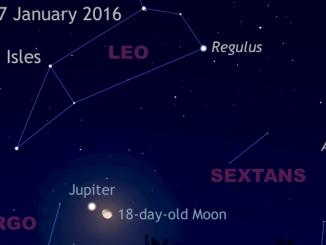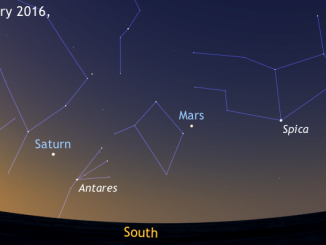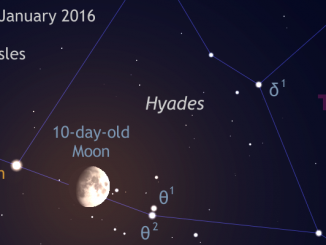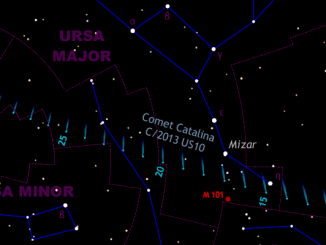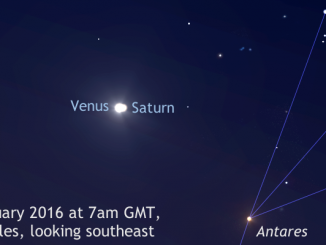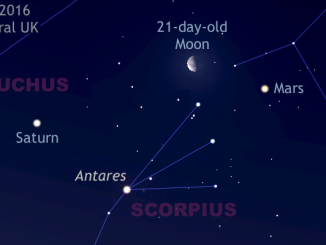
See the Moon, Mars and Saturn triple conjunction of 1 March
In the pre-dawn twilight of Tuesday, 1 March, the 21-day-old waning gibbous Moon acts as a convenient celestial guide to planets Saturn and Mars. For observers in the centre of the British Isles, the best time to see this triple conjunction is shortly before 6am GMT, when the trio are highest in the sky to the south.





